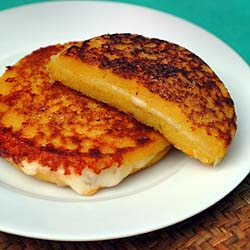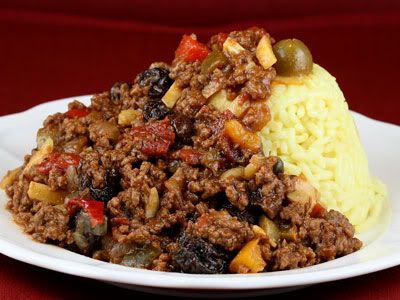Biography Source google.com.pk
Cuban cuisine is a fusion of Native American Taino food, Spanish, African, and Caribbean cuisines. Some Cuban recipes share spices and techniques with Spanish and African cooking, with some Caribbean influence in spice and flavor. This results in a unique, interesting and flavorful blend of the several different cultural influences, with strong similarities with the cuisine of the neighboring Dominican Republic and Puerto Rico. A small but noteworthy Chinese influence can also be accounted for, mainly in the Havana area. During colonial times, Cuba was an important port for trade, and many Spaniards who lived there brought their culinary traditions along with them.[1]
As a result of the colonization of Cuba by Spain, one of the main influences on the cuisine is from Spain. Along with Spain, other culinary influences include Africa, from the Africans that were brought to Cuba as slaves, and French, from the French colonists that came to Cuba from Haiti.[1] Another important factor is that Cuba itself is an island, making seafood something that greatly influences Cuban cuisine. Another contributing factor to Cuban cuisine is the fact that Cuba is in a tropical climate. The tropical climate produces fruits and root vegetables that are used in Cuban dishes and meals.[2]
A typical meal would consist of rice and beans, cooked together or apart. When cooked together the recipe is called either "Congri" or "Moros" or "Moros y Cristianos" (black beans and rice). If cooked separately it is called "Arroz con/y Frijoles" (rice with/and beans).[3] A main course (mainly pork or beef) like "Ropa Vieja", some sort of vianda (not to be confused with the French viande which stands for "meat", this term encompasses several types of tubers, such as yuca, malanga, and potato all served either hervidas (boiled) or fritas (fried), as well as plantains, unripe bananas and even corn), a salad (usually simply composed of tomato, lettuce and avocado, though cucumber, carrots, cabbage, fermented green beans and radish are not uncommon). Curiously, typical criollo meals largely ignore fruit, except ripe plantains, which are usually consumed together with the rice and beans. Tropical fruit could be served, however, depending on each family's preferences. Usually, all dishes are brought together to the table at once, except maybe for desserts which typically consists of guava candied in syrup with anise and cinnamon served with a tangy and pungent white Sheep milk cheese.
Boliche
Rice and beans are a culinary element found throughout Cuba, although it varies by region. In the eastern part of the island, "arroz congri oriental" is the predominant rice and bean dish. White rice and red kidney beans are cooked together with a sofrito and then baked in the oven. The same procedure is used for the above-mentioned Congri (also known by the terms Arroz Moro and Moros y Cristianos – literally "Moors and Christians") which instead uses black beans. Although the process of preparing the black bean soup contains basics (onion, garlic, bay leaf, salt) each region has their tradition of preparing it.
Meat, when available on ration book is usually served in light sauces. The most popular sauce, used to accompany not only roasted pork, but also the viandas, is Mojo or Mojito (not to be confused with the Mojito cocktail), made with oil, garlic, onion, spices such as oregano and bitter orange or lime juice. The origin of Cuban mojo comes from the mojo sauces of the Canary Islands. Cuban mojo is made with different ingredients, but the same idea and technique are used from the Canary Islands. Of course with so many Canary Islander immigrants in Cuba, the Canary Islander influence was strong. Ropa vieja is shredded beef dish (usually flank) simmered in tomato-based criollo sauce until it falls apart. Ropa Vieja is the Spanish name meaning "old clothes", in which the dish gets its name from the shredded meat resembling "old clothes". Ropa vieja is also from the Canary Islands, as are many of the origins of Cuban food. Boliche is a beef roast, stuffed with chorizo sausage and hard boiled eggs.
Equally popular are tamales, although not exactly similar to its Mexican counterpart. Made with fresh ground corn, Sofrito (tomato,onion,garlic Etc.) and pieces of pork meat, tamales are wrapped in corn leaves and tied, boiled in salted water and served in a number of different ways. Tamales en cazuela is almost the same recipe, although it does not require the lengthy process of packing the tamales in the corn leaves before cooking, but rather is directly cooked in the pot. Tamales as well as black bean soup, are among the few indigenous foods that have remained part of the modern Cuban cuisine.
Stews and soups are common. These are usually consumed along with white rice or gofio (a type of corn flour, also from the Canary Islands), or eaten alone. Corn stew, corn soup (guiso), caldosa (a soup made with a variety of tubers and meats), are popular dishes as well. Also common when available are the popular white bean Spanish stews, such as Caldo gallego (Galician stew), Fabada Asturiana (Asturian Stew) and Cocido de Garbanzos (chickpea stew).
Cuban cuisine uses citrus (i.e. sour orange, lime, lemon), tomato, vinegar, onion, garlic, peppers, white wine or beer (depending on region and dish), raisins and olives/capers to flavor almost every savory dish. This combination of flavor often results in complex flavors with sweet, salty and acidic components. Cuban desserts are known for their sweetness and many desserts use citrus peel, cinnamon or anise seed to add distinct flavor. Tropical fruits are often cooked in a sugar syrup with cinnamon and citrus peel and served on white cheese for contrasting flavor or baked in flaky pastries.
Cuban cuisine has developed through the influences of the Cuban exile community in Miami and many traditional Cuban dishes have been readdressed by chefs influenced by nouvelle cuisine and American tastes.
Cuban Food Recipes
Cuban Food Recipes
Cuban Food Recipes
Cuban Food Recipes
Cuban Food Recipes
Cuban Food Recipe
Cuban Food Recipes
Cuban Food Recipes
Cuban Food Recipes
Cuban Food Recipes
Cuban Food Recipes
Cuban Food Recipe
Cuban Food Recipes
Cuban Food Recipes
Cuban Food Recipes
Cuban Food Recipes
Cuban Food Recipes













No comments:
Post a Comment